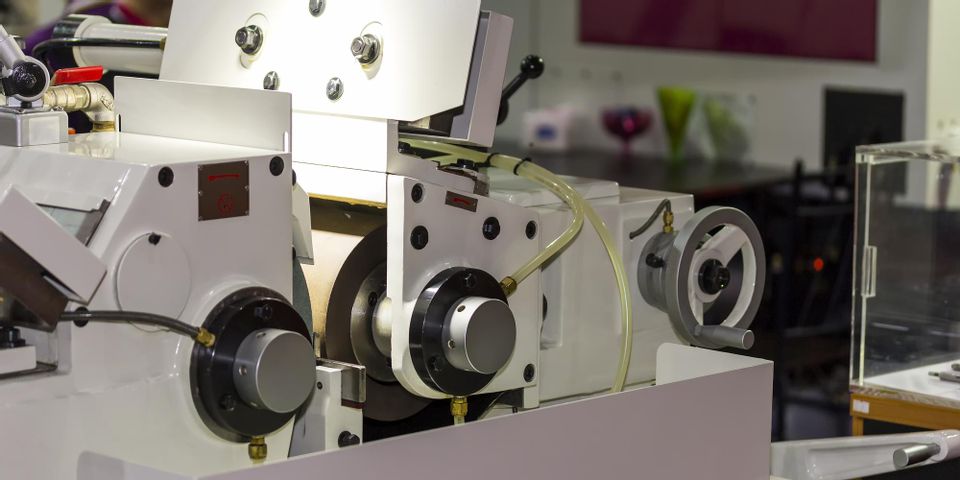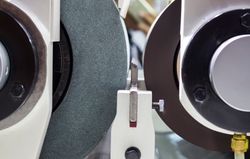
In machine shops, masterpieces are made by slowly removing, shaping, and reworking metal. One of these transformative techniques is centerless grinding, which differs from the more traditional cylindrical grinding. To learn more about this metal processing method, consider these frequently asked questions.
FAQ About Centerless Grinding
What is it?
If you need to make a round object smaller, centerless grinding will grind down the outside edge. As the object is pressed against a wheel covered in abrasive material, the metal's overall diameter is reduced evenly. Another wheel, placed on the opposite side of the object, holds it in place. This is different from other grinding practices, where the workpiece will be “centered” on a spinning spoke or beam, and ground against a stationary abrasive tool.
When is it useful?
 Centerless grinding has a multitude of applications, from the cylinders and U-joint components in the automotive industry to bearings and rotors in the aviation and aerospace industries. Pistons, crankshafts, injector needles, and axles are also processed using centerless grinding techniques.
Centerless grinding has a multitude of applications, from the cylinders and U-joint components in the automotive industry to bearings and rotors in the aviation and aerospace industries. Pistons, crankshafts, injector needles, and axles are also processed using centerless grinding techniques.
What benefits does it provide?
Centerless grinding is often used after machining processes, such as turning. That’s because it allows metal fabrication teams to perfect the roundness of a workpiece. Other grinding techniques feature axial thrust, which can warp long pieces of metal. With centerless grinding, metal workers don’t have to worry about perfectly centering the object or making sure it’s clamped in just the right place—they can simply slip the workpiece between the two wheels and trust that it will find its own center.
The equipment will then grind away an even layer. In addition to creating better results, this increases efficiency and productivity in machine shops.
Are there different types of centerless grinding?
There are two main methods of centerless grinding, through-feed and in-feed. In through-feed grinding, the regulating wheel is slightly angled to push the workpiece past the abrasive wheel. This results in a more consistently round surface. In in-feed grinding, custom notches or slots are ground into the workpiece, which requires custom-shaped wheels spinning at different speeds.
If your project could benefit from centerless grinding, turn to the experts at LWG Finishing. This Fairfield company serves clients throughout the Tri-State Area, including Ohio, Kentucky, and Indiana. With over 50 years of experience, you can trust them to provide flawless and long-lasting grinding work. To learn more about their offerings, visit the website, or call (513) 860-1156.
About the Business
Have a question? Ask the experts!
Send your question

